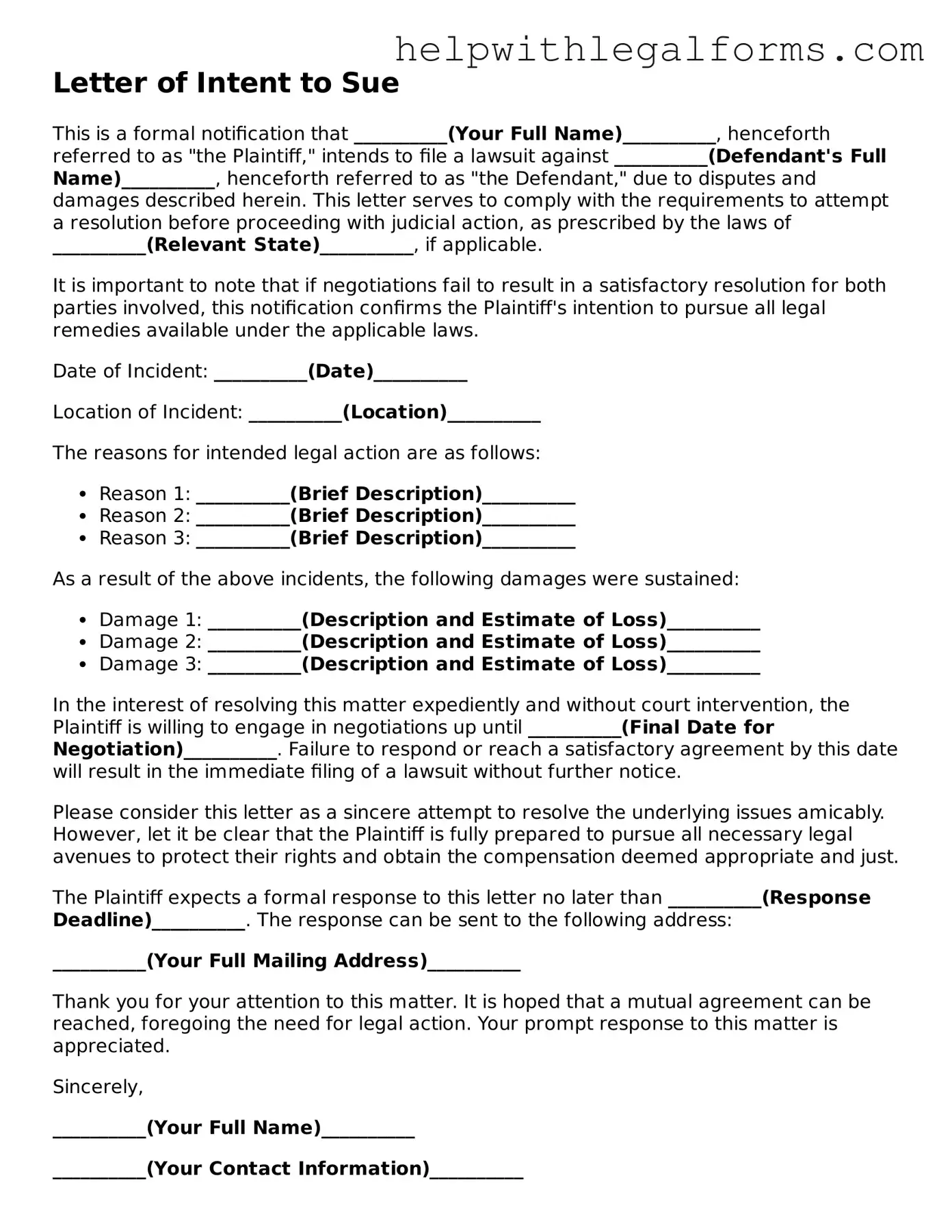What is a Letter of Intent to Sue?
A Letter of Intent to Sue is a document that notifies an individual or entity of your intention to initiate legal proceedings against them if a specified dispute is not resolved. This letter typically outlines the basis for the potential lawsuit, including the issues in dispute and any demands for resolution.
Why would someone send a Letter of Intent to Sue?
This letter is sent as a formal step to encourage the opposing party to resolve the issue without going to court. It serves as a final attempt to settle disputes amicably before legal action is taken. It also provides a clear record of attempts to resolve the issue before litigation.
What should be included in a Letter of Intent to Sue?
The letter should include the sender's name and address, the recipient's name and address, a clear statement of the intention to sue, a detailed description of the dispute, any demands for resolution, the timeframe for the recipient to respond, and any applicable laws or contracts that support the sender's position.
Is sending a Letter of Intent to Sue legally required before filing a lawsuit?
While not always legally required, it can be a prerequisite in certain types of cases or jurisdictions. It is advisable to consult with a legal professional to understand if it is necessary in your specific situation.
How does one deliver a Letter of Intent to Sue?
The letter should be delivered in a manner that provides proof of delivery, such as certified mail with a return receipt, email with read receipt, or hand delivery by a professional process server. Proof of delivery ensures there is a record that the recipient received the letter.
What happens after a Letter of Intent to Sue is sent?
After sending the letter, the recipient has the opportunity to respond and potentially resolve the dispute by the specified deadline. If the recipient does not meet the demands or neglects to respond, the sender may proceed to file a lawsuit.
Can a Letter of Intent to Sue be used as evidence in court?
Yes, the letter can serve as evidence in court, demonstrating that the plaintiff made a good-faith effort to settle the dispute before resorting to litigation. This can be particularly important in jurisdictions that require attempts at resolution before filing a lawsuit.
Does sending a Letter of Intent to Sue obligate one to file a lawsuit?
No, sending the letter does not legally bind the sender to file a lawsuit. It is a preliminary step that may lead to court if the dispute is not resolved, but the sender can decide not to proceed with legal action for various reasons.
How long after sending a Letter of Intent to Sue can one file a lawsuit?
The timeframe for filing a lawsuit after sending the letter varies by jurisdiction and the nature of the claim. It is important to be aware of the statute of limitations for your case to ensure you file in a timely manner.
Who can help me draft a Letter of Intent to Sue?
It is advisable to consult with a legal professional or attorney to draft a Letter of Intent to Sue. They can ensure that the letter accurately reflects your position, abides by local laws, and effectively communicates your demands to the recipient.
